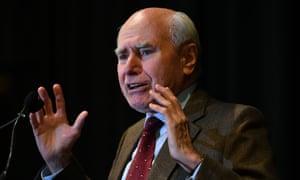Elizabeth Murdoch Hall
Sunday 24 June 2018
I’ve listened to a lot of pianists. Some, mainly competition
finals, out to impress a jury, seem to have decided that louder and faster is better:
the rock band syndrome. The corollary of that is, to find the musician, listen
to the pianist play something that’s not presto
agitato. The more lento, more pianissimo the better.
Anna Goldsworthy played two
concertos this afternoon each with a slow movement. No agitato here; no hint of presto
– except in the Hungarian movement of the Haydn concerto where there was
plenty.
Haydn’s Piano Concerto No.11 was
written between 1780
and 1783 in the gallant style.
The style required light elegance in music. Perfumed handkerchiefs were in fashion.
The second movement is marked Un poco adagio. It’s writing is elegant and
chromatic and in Anna’s hands it’s performance became absolutely beautiful as
well. She took her time to find the elegant phrases and she often introduced them
with micro-rubato with absolutely no hint of affectation.
 |
| Anna Goldsworthy Source: http://www.annagoldsworthy.com/ |
Anna is a pianist whose head is firmly
in the Classical style, including Haydn. She restrained the hints of
romanticism – they are there are in both Haydn and Mozart – and so made them
all the more powerful; a case of what’s unsaid. There was an obvious intelligence in
this work that impressed me. Anna told me a few months ago that she was about to
begin to learn the work. In my ignorance I thought she meant the notes. It became
clear yesterday that she’d been talking about its style, its culture, its colour
and its modulations.
Gallant
style was young Mozart as well. Mozart 6 was written in 1776 when he had
just turned 20 so it almost overlaps with Haydn 11. The major difference,
though, was clear in Anna’s playing of its slow movement. It is marked Andante un poco adagio
and it was the adagio bit that
allowed her exploration of the incredibly beautiful modulations that, in
typical Mozart fashion, are complex, extended and very interesting.
An integral part of that Mozart piece is the orchestra –
strings with a brace of horns, of oboes and of flutes. In the orchestra-only
sections Anna gently, unconsciously, conducted with her right hand just below
the keyboard with a gentle up-beat onto the keyboard to continue her piano
part.
Which brings me to this problem: the
first movement and the Rondo all'Ungarese movement of the Haydn concerto was not too
fast for Anna but it was for the violins.
The violin’s delicate semiquavers lost their definition in
bars three and four then nine and ten. I heard a sort of chord rather than four
discrete notes. It was often a problem in the third movement too, made worse by
the contrast with the piano playing the same figure but with precision and clarity.
It’s common to hear this in the ‘best’ commercial recordings. But my view is
that if it’s written as four semiquavers, that’s what you play; that’s what I
want to hear. Was it under-skilled violinists? I‘m certain it was not. Was it
under-rehearsal due to lack of funds? That’s my guess.
 |
| http://imslp.org/wiki/Keyboard_Concerto_in_D_major,_Hob.XVIII:11_(Haydn,_Joseph) |
Having said that, there’s some incredible talent in that
orchestra. That’s no surprise since Bill Hennessy knows where the talented young
musos are in Melbourne – and there are plenty. Emma Double-bass Sullivan with
her celli accomplices set the pace for Haydn. (She’s brilliant, is Emma) and a
pair of horns had the running for Mozart (brilliant musos as well).
And when the band wasn't playing there were the solo piano
sections. After this single hearing I was convinced the cadenzas of both concertos were the composer's. But they were Anna's own. "It was a delightful and creative process to devise them", she said. She could also have said "fascinating" - the idea of getting into Haydn's head (that mixture of serious classicism and deadly humour) to write something of her own that could easily have been his. (Getting into Mozart's head doesn't bear thinking about.) In any event, they were simply superb. And I was fascinated by the fact that she did not use them as a vehicle for
self-aggrandisement. But then she had no need to.
I heard a world-class performance of two not-very-showy
concertos today. I heard delicacy, lightness and elegance from both piano and band
that made me glad. All that was needed was the hand-kerchief, perfumed, of
course.






